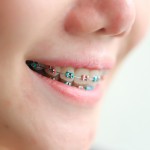
While both fixed and removable appliances are used for orthodontic treatment the quality of the results are higher with fixed appliances. Consequently, fixed appliances are the most common approach with the vast majority of treatment being conducted in adolescence or childhood. Forces to move teeth are applied using archwires. With developments in wire technology it is important to understand their clinical performance at various stages of orthodontic treatment.
The aim of this Cochrane review was to assess the effects of initial arch wires for the alignment of teeth with fixed orthodontic braces, in terms of the rate of tooth alignment, amount of root resorption accompanying tooth movement, and intensity of pain experienced by patients during the initial alignment stage of treatment.
Methods
Searches were conducted in the Cochrane Oral Health’s Trials Register, the Cochrane Central Register of Controlled Trials (CENTRAL) Medline, Embase, the US National Institutes of Health Trials Registry (ClinicalTrials.gov) and the World Health Organization International Clinical Trials Registry Platform with no limits on language or date of publication. The primary outcomes were Alignment rate (tooth movement measured over a period of time) and the incidence/prevalence and amount of root resorption. Randomised controlled trials (RCTs) of initial arch wires to align teeth with fixed orthodontic appliances were considered. Two reviewers selected studies, abstracted data and assessed risk of bias. The quality of evidence for each comparison and outcome was assessed using the GRADE criteria.
Results
- 12 RCTs involving a total of 799 patients were included.
- 3 were at low risk of bias, 3 at high risk and 6 were of unclear risk.
- 5 studies compared multistrand stainless steel versus superelastic nickel-titanium (NiTi) arch wires. Two studies contributed to meat-analysis. There is insufficient evidence from these studies to determine whether there is a difference in rate of alignment There was no meaningful difference in pain between the interventions; MD= -2.68 mm, (95%CI; -6.75 to 1.38) 2 studies, 127 participants; moderate-quality evidence).
- 2 studies compared multistrand stainless steel versus thermoelastic NiTi arch wires. There is insufficient evidence to determine whether there is a difference in rate of alignment (low-quality evidence).
- 3 studies compared conventional NiTi versus superelastic NiTi arch wires. There is insufficient evidence to determine whether there is a difference in rate of alignment or pain (low- to very low-quality evidence).
- 2 studies compared conventional NiTi versus thermoelastic NiTi arch wires. There is insufficient evidence to determine whether there is a difference in rate of alignment (low-quality evidence).
- Only 1 study compared single-strand superelastic NiTi versus coaxial superelastic NiTi arch wires. There is moderate-quality evidence that coaxial superelastic NiTi can produce greater tooth movement over 12 weeks (MD -6.76 mm, 95% CI -7.98 to -5.55). Pain was not measured.
- 3 studies compared superelastic NiTi versus thermoelastic NiTi arch wires. There is insufficient evidence from these studies to determine whether there is a difference in alignment or pain between superelastic and thermoelastic NiTi arch wires (low-quality evidence).
Conclusions
The authors concluded: –
Moderate-quality evidence shows that arch wires of coaxial superelastic nickel-titanium (NiTi) can produce greater tooth movement over 12 weeks than arch wires made of single-strand superelastic NiTi. Moderate-quality evidence also suggests there may be no difference in pain at day 1 between multistrand stainless steel arch wires and superelastic NiTi arch wires. Other than these findings, there is insufficient evidence to determine whether any particular arch wire material is superior to any other in terms of alignment rate, time to alignment, pain and root resorption.
Comments
This Cochrane review updates the previous 2013 version (Dental Elf – 7th May 2013) and includes 3 new RCTs. The result of this is that the reviews conclusions have changed previously there was no reliable evidence that any one type of archwire was better. The update now includes moderate quality evidence that coaxial superelastic NiTi can produce greater tooth movement than single-strand super elastic NiTi.
Since 2013 there has been a slight improvement in the available evidence but there are still concerns regarding both the quality of both the conduct and reporting of the studies. AS a result further high quality studies are needs to clarify which arch wires are best and the reviewers highlight eight key issues that should addressed when planning and reporting future studies in this area.
Links
Primary Paper
Wang Y, Liu C, Jian F, McIntyre GT, Millett DT, Hickman J, Lai W. Initial arch wires used in orthodontic treatment with fixed appliances. Cochrane Database of Systematic Reviews 2018, Issue 7. Art. No.: CD007859. DOI: 10.1002/14651858.CD007859.pub4.
Other references
Cochrane Oral Health Group Blog
Dental Elf – 7th May 2013
